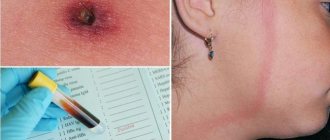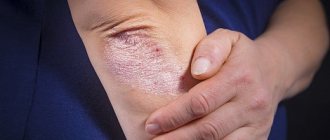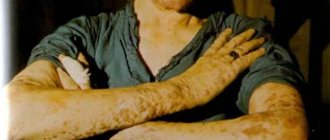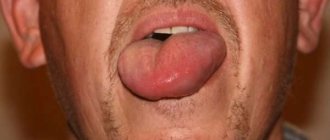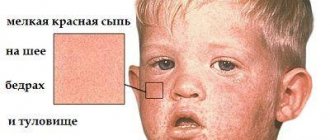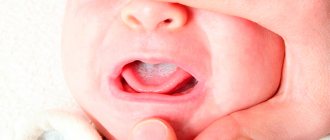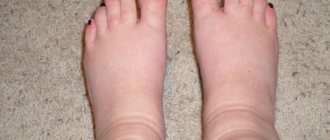Herpes is a viral disease with the main symptom being blisters on the skin. 90% of the population has the virus, but only 5% show symptoms. In other cases, the disease occurs without symptoms or clinical consequences. A virus of the Herpresviridae family provokes life-threatening diseases and infections, which are one of the causes of deformities in children.
The disease affects:
- Mucous membrane.
- Eyes (keratitis, conjunctivitis), skin.
- Nervous system (meningitis, encephalitis).
- The mucous membrane of the genital organs.
Rashes appear on the porches of the nose, borders of the lips, cheeks, eyelids, forehead, ear area, inner surface of the cheeks and lips. The most common place is the corners of the lips. There are cases when herpes on the body (photo) occurs in all places at the same time.
Causes
The causes of herpes on the face are the presence of 3 types of herpes virus in the body:
- HSV type 1. Usually causes colds in the lip area.
- HSV type 2. Most often localized in the genital area.
- Herpes zoster. Causes shingles.
Typically, herpes on the face, which manifests itself in different areas: in the cheeks, forehead, around the mouth, near the lips and other areas of the facial skin, is caused by the herpes simplex virus. The Herpes zoster virus (herpes zoster), the causative agent of which is Varicella zoster (chickenpox), affects the face much less frequently, but is more difficult to tolerate.
In the photo below you will see the differences between herpes zoster on the face and what herpes on the face looks like caused by HSV types 1 and 2:
Initially, infection occurs through the skin or mucous membrane. It is very easy to become infected with herpes. One way is through contact with an infected person, of course, if at that moment he experiences a relapse of the disease. Or through household objects, although this happens extremely rarely. It is more difficult for an adult to become infected, since the virus needs to get to the mucous membrane. But a child can become infected through the skin.
Then the virus goes deep under the skin and those cells that have penetrated the neurites (long processes of nerve cells) will become a factory for the production of herpes viruses. The response to the production of viral cells will be the constant work of the immune system, which will begin to destroy them to maintain balance. As a result, if our immune system weakens, the herpes virus will begin to climb to the surface of the skin and infect skin cells, causing a relapse.
With HSV, if herpes at the very beginning affected the facial nerve, then in case of relapse it will appear only in the facial area, since HSV is not able to change location within the body between zones of the nervous system.
From the above, it becomes clear to us that the recurrence of herpes and its manifestation on the face has different external factors, but one common cause is reduced immunity. Factors that undermine the immune system can be the following:
- depression, frequent stress;
- overheating or hypothermia;
- improper adherence to low-calorie diets;
- colds;
- long-term treatment with antibiotics;
- improper metabolism;
- transfer of serious illnesses or operations;
- avitaminosis;
- smoking and alcohol abuse.
Types and stages of the disease
Rashes on the body are the work of different types of viruses. Each variety has its favorite localization sites.
Type 1 herpes (cold herpes) prefers the face, but can also spread to the body, type 2 herpes affects the genitals (symptoms, treatment and photos of genital herpes can be found in this article), type 3 herpes (herpes zoster, herpes zoster) appears on the chest , back, stomach.
Experts distinguish 4 stages of the disease:
- stage of development of herpes (characterized by tingling, redness of the skin in those areas where the rash subsequently appears);
- stage of inflammation (characterized by the presence of bubbles);
- ulceration stage (vesicles are replaced by ulcers);
- eschar formation.
Symptoms
The symptoms of herpes on the face in any area of manifestation are almost identical. Most often, herpes recurs in the lip area, but it can also appear throughout the face.
Below, in the third photo, herpes is shown on the cheeks, and in the fourth you can see the manifestation of herpes on the cheek of a child. In adults and children, the symptoms of rashes are the same.
Below, photo number 5 shows how herpes formed on the forehead, and the sixth photo shows how herpes zoster appears on the face.
The symptoms of shingles may vary slightly; as a rule, it affects larger areas of the skin of the face, and it is also characterized by a rash on one side. In addition, you need to know that herpes zoster on the face of a child is a very rare occurrence.
In most cases, the symptoms of herpetic rashes in the facial area can be formulated as follows:
- On the first day, in the place where herpes blisters should soon appear, a slight tingling and slight itching appears in the skin.
- The next day, bubbles with a thin film and a small amount of clear liquid appear. After half a day, complete focal coverage of these rashes is formed. Over the next few days, the bubbles increase in size and fill with a cloudy liquid.
- After about three days, the bubbles burst and the liquid flows out of them. Ulcers form, which are subsequently covered with a crust, most often with a yellowish tint.
- Within a week, the crusts of the ulcers are renewed with new skin and gradually the healing process eliminates the symptoms of the rash.
Sometimes the disease is accompanied by headaches, high fever and general physical fatigue. Most often this happens when the body is first infected with a herpes virus. In order to determine whether the patient has a recurrent stage or a primary stage, it is necessary to donate blood for antibodies. This is a mandatory procedure during pregnancy, even if a woman is not acutely ill during pregnancy, it is still recommended to undergo tests. This makes it much easier to prevent relapses and prevent the disease.
Treatment
How to quickly get rid of herpes on the face? In order to prevent infection at an early stage, it is recommended to use herpes ointments on the face at the first signs of itching and tingling. It is necessary to smear tingling areas regularly. With the constant presence of the ointment on the affected area, the virus is blocked in the subcutaneous environment where it multiplies. This will allow you to get rid of herpes on your face in the shortest possible time.
Many people wonder how to treat herpes on the face if the disease has progressed to a deeper form. To do this, there is a set of drugs that must be used simultaneously:
- Immunomodulators. These drugs are necessary to stimulate the immune system so that it helps us fight viruses.
- Symptom relievers. These include: antipyretics, painkillers, wound healing medications. You can use such products as: Nurofen, Paracetamol, Rescue Balm and others.
- Antiviral. You can take pills for herpes, such as Famvir or Valtrex. And also injections, for example – Foscarnet. All antiviral medications should be prescribed only by the attending physician; such medications are taken in severe forms of the disease and only under the supervision of a specialist.
- Herpes ointment. Gerpivir is considered a good ointment, but you should also pay attention to Zovirax or Acyclovir.
The main thing to remember is that complex treatment will only help after correct diagnosis, identification of the stage of the disease and a well-designed treatment plan. Before treating herpes on the face, consult a doctor!
It is not recommended to use homeopathy in the treatment of herpes, especially during pregnancy and breastfeeding. On the contrary, such a treatment method can cause serious complications.
ethnoscience
To treat herpes on the face at home, some people use traditional medicine. But know that folk remedies for herpes are ineffective. It is better to use them at the very beginning along with ointments in order to quickly cure herpes on the face. Or during healing, so that it goes faster.
Here are a few traditional medicine recipes for treating herpes on the cheek, forehead and other possible lesions:
- Celandine. Grind together with the roots in a meat grinder; then squeeze out the juice and close tightly in the container; After 7 days, the resulting infusion should be used to treat damaged areas of the skin.
- Garlic. You can mix finely chopped garlic with honey and treat blistering rashes with this mixture. Garlic can be used without honey, just cut a clove of garlic and apply it to the herpes.
- Kalanchoe and aloe. We simply squeeze out the plant juice and lubricate the virus-affected areas with the contents. This juice can be taken orally, 1 teaspoon per day, for 14 days - this helps improve immunity.
Medicine for herpes on the body
The most common drug that modern medicine uses to treat herpes is acyclovir (and tablets, ointments, and creams containing it). In addition to it, valacyclovir and drugs containing it have become widespread.
How long does it take for herpes to last on the body of a child and an adult? Depends on the state of immunity. Using acyclovir can stop the rash and block the virus in 4-7 days. Frequency of use of the drug: 5-6 times a day
(every 4 hours).
Features in children
The causes of herpes on the face of a child are the same as in adults. But with children everything is not so obvious. It is necessary to understand that it is much easier for a child to get primary infection than for an adult, so you need to closely monitor this. A feature of the frequent localization of the virus in children is the wings of the nose and the area around the eyes.
After the rash appears, children often scratch the wounds because they cannot tolerate the itching. The danger is that if a child scratches his cheeks affected by the virus, this can infect his fingers and lead to herpetic whitlow. Therefore, when symptoms appear, remember how to quickly cure an infection at the initial stage (this is written above) and, if this does not help, consult a doctor.
Know! Children suffer from herpes infection very hard, therefore, in order to avoid complications such as pneumonia and meningitis, it is recommended to go to the hospital from the first days of identifying symptoms.
Epstein-Barr virus
Herpes virus type 4 - Epstein - Barr. It gives rise to an acute infectious disease. The medical picture occurs in people with immunodeficiencies. Acutely infectious mononucleosis is the destruction of the mucous layers of the oropharynx and lymph nodes, which is characterized by significant temperature, possible damage to the liver and spleen, and changes in the morphology of blood cells (atypical mononuclear cells). As a rule, a person suffers from mononucleosis during adolescence or young adulthood. Infection is airborne or contact (including oral-genital). Hidden period from 5 to 50 days.
Prevention
Knowing that herpes affects an organism with a weakened immune system, we can protect ourselves from frequent relapses by supporting our immune system. To do this, you must adhere to several rules:
- engage in healing of the body;
- take vitamin complexes regularly;
- avoid stress;
- Healthy food;
- get rid of bad habits.
If a family member in your home becomes infected or has a relapse of the disease, explain to him what to do to recover faster. During the course of the disease, provide separate dishes for him and avoid close contact.
So, from the above we can conclude that the treatment of herpes on the face is not particularly different from the treatment of colds on the lips if the cause is HSV. Do not forget about the rules that must be followed during pregnancy and when caring for children during primary infection or during relapse of the disease. And you also need to take into account that herpesvirus infection is not just a cosmetic disease, as many believe. Therefore, only a specialist and the clinical situation can help you correctly diagnose and find out how to cure it in your case.
HSV-2
Herpes simplex virus type 2 is briefly called HSV-2. In the medical literature it is labeled as genital or anogenital (the location of the lesions in the anus and genitals). Under specific circumstances, genital herpes can damage other parts of the body; even entire affected areas have been identified for HSV-2. As a rule, HSV-2 is transmitted through sexual contact. Testing a girl planning a pregnancy for the presence of IgG to herpes type 2 can help detect gynecological diseases and implement timely therapy, which increases the possibility of a standard course of the gestational stage and the birth of a healthy baby.


